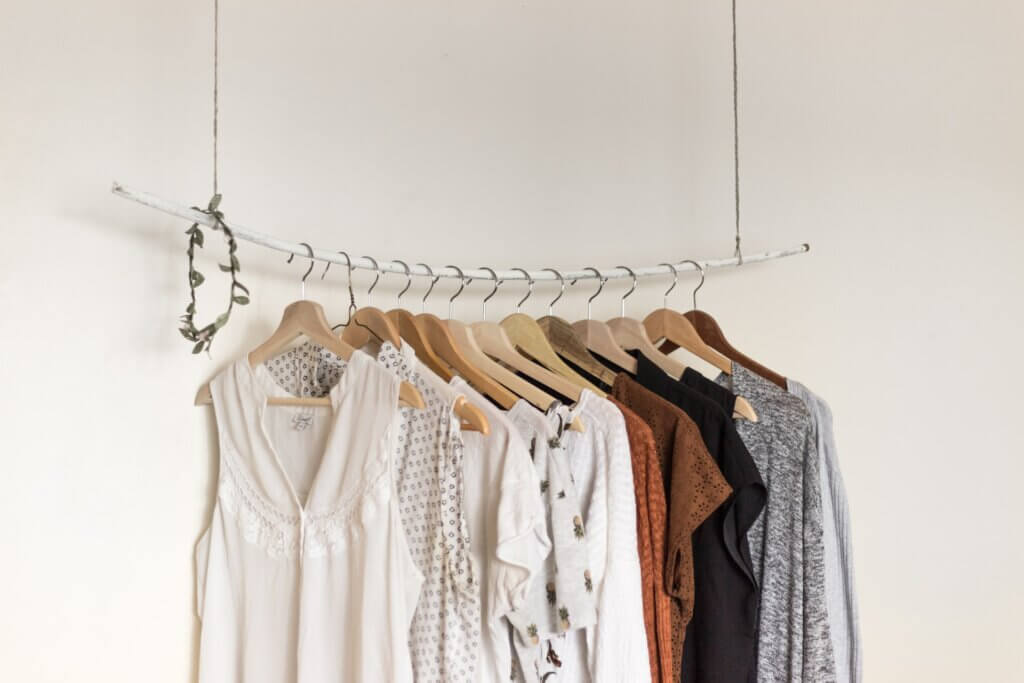The world of premium cigars is steeped in an aura of sophistication and tradition, captivating connoisseurs and casual enthusiasts alike. More than just a pastime, cigar smoking is an experience, a ritual that epitomizes luxury, relaxation, and a deep appreciation for craftsmanship. The allure of a premium cigar lies not just in the pleasure of its smoke but in the rich history and meticulous process behind its creation.
Every cigar begins its life as a mere seed, embarking on a remarkable journey that transforms it into a symbol of refinement and taste. This journey, from seed to smoke, is a fascinating story of dedication and artistry, where every step is integral to crafting the final masterpiece that gracefully rests between the fingers of a cigar aficionado.
For the fan of cigars, understanding this journey enhances the appreciation of each puff, making the experience all the more enriching. Let’s embark on this journey together, uncovering the secrets that make every premium cigar a unique testament to a centuries-old craft.
Seed Selection and Cultivation
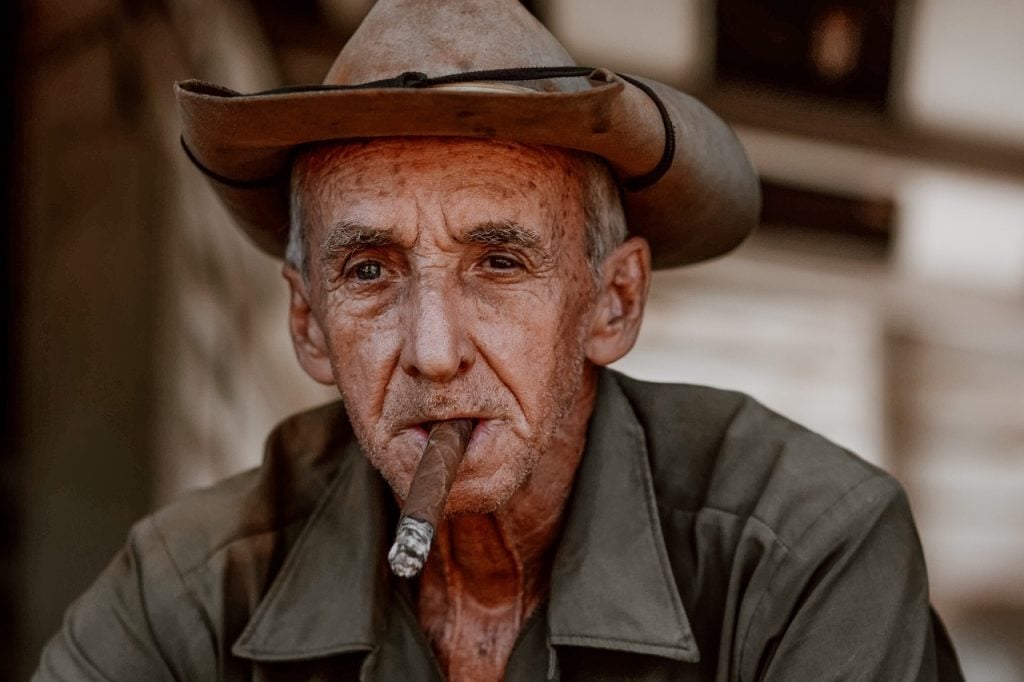
The journey of a premium cigar begins with one of the most crucial steps: the selection of the seed. This is where the magic starts, as the seed largely determines the flavor profile, strength, and aroma of the final product. Tobacco seeds are tiny, yet they carry the genetic blueprint for the characteristics of the tobacco leaf.
Growers often choose seeds based on the desired attributes of the cigar, be it boldness, smoothness, or a specific flavor note. This selection process is steeped in tradition, expertise, and sometimes, closely guarded secrets.
Once the right seeds are chosen, the cultivation process begins. Tobacco plants are incredibly sensitive to their environment, making the climate and soil conditions paramount. They thrive in warm, tropical climates with rich, well-drained soils. The right balance of sun and rain is essential for the plants to develop the desired leaf quality. The soil's mineral content also plays a significant role, as it can add distinct flavors to the tobacco. For instance, volcanic soils are often credited for adding a unique richness to the leaves.
Various regions around the world are renowned for producing quality tobacco, each imparting its unique characteristics to the cigar. The Vuelta Abajo region in Cuba is legendary for its robust and flavorful tobacco, a favorite among many aficionados. Nicaragua's Estelí region produces tobacco with a rich, spicy profile, while the Connecticut River Valley in the United States is famous for its milder, smoother tobacco, often used for wrappers. The Dominican Republic, Honduras, and Brazil are also key players, each contributing their signature styles to the world of cigars.
This initial stage of seed selection and cultivation sets the foundation for what becomes premium cigars. The combination of genetic selection, environmental factors, and regional characteristics creates a vast palette of flavors and experiences, making each cigar a unique journey from the very beginning.
Harvesting and Curing: The First Transformation

Harvesting tobacco leaves is a process that demands precision and timing, marking the first significant transformation in the life of a premium cigar. Unlike many crops, tobacco leaves are not all harvested at once. The process is staggered, as leaves at different positions on the plant (bottom, middle, and top) mature at varying rates.
The bottom leaves, known as ‘volado,' are typically harvested first, offering lighter flavors. They are followed by the ‘seco' leaves in the middle, which carry a more balanced flavor profile. Finally, the top leaves, or ‘ligero,' are harvested; they are the most potent and flavorful, having received the most sunlight and nutrients.
Once harvested, the leaves undergo curing, a critical process that initiates the development of the tobacco's flavors and aromas. During curing, the chlorophyll in the leaves breaks down, and the green color fades. This process also stabilizes the leaves, making them less susceptible to decay and preparing them for fermentation.
There are several methods of curing, each imparting distinct characteristics to the tobacco:
- Air Curing: In this method, leaves are hung in well-ventilated barns and slowly dried by the air. This process, which can take up to two months, is often used for varieties like Burley tobacco, leading to a smoother, milder flavor.
- Sun Curing: Here, leaves are exposed to direct sunlight, accelerating the curing process. Sun-cured tobacco, commonly used in cigarette production, tends to be more aromatic and sweeter.
- Fire Curing: In fire curing, leaves are exposed to smoke from a low-burning fire, often of hardwood. This imbues the tobacco with a distinct smoky flavor and aroma, commonly found in Latakia tobacco used in pipe blends.
- Flue Curing: Flue-cured tobacco is dried in a controlled environment where heat is introduced through pipes (flues). This method is fast, taking about a week, and produces a high-sugar, medium-bodied tobacco, often used in cigarettes and some cigars.
Fermentation: Developing Depth and Character
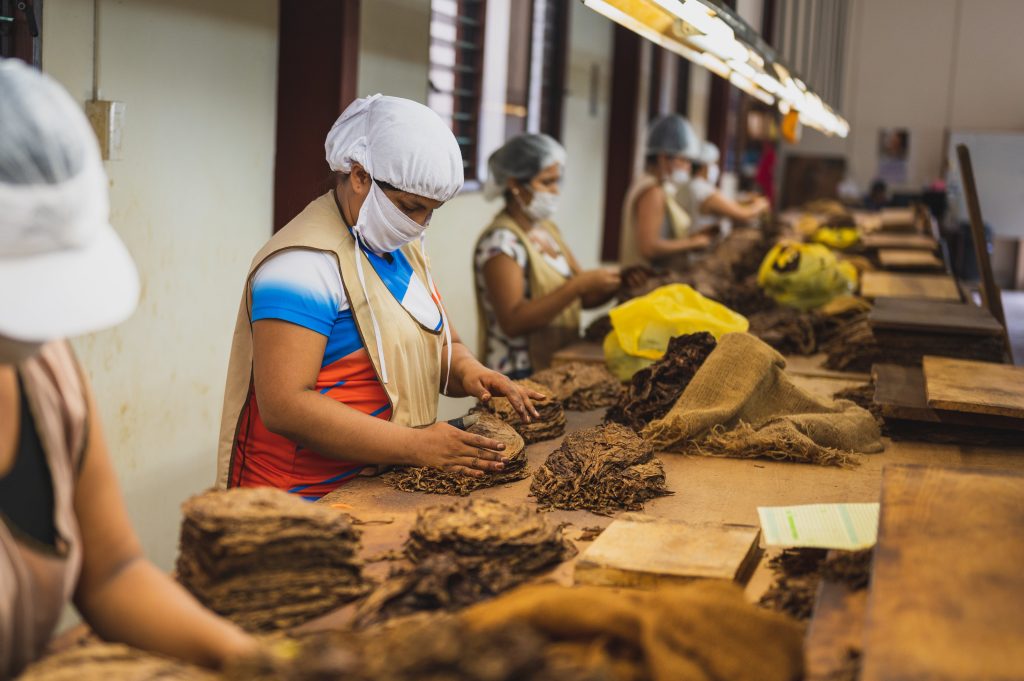
Following the curing process, tobacco leaves embark on another critical phase: fermentation. This stage is where the depth, character, and soul of the cigar are truly developed. Fermentation is a natural process, but it requires careful monitoring and control to achieve the desired outcome.
During fermentation, cured tobacco leaves are moistened and then stacked in large piles called “pilones.” The moisture and pressure from the weight of the leaves generate heat, initiating a slow, controlled decomposition. This heat is essential as it encourages the breakdown of proteins, starches, and other compounds in the leaves. The process reduces the levels of nicotine and other harsh elements, while simultaneously enhancing the leaves' natural flavors and aromas.
The impact of fermentation on the tobacco leaves is profound. It alters the chemical composition, mellowing the tobacco and bringing out a richness and complexity that was not previously present. The process also helps in developing the smoothness of the smoke, ensuring that the final cigar does not have an overly harsh or bitter taste.
The timeframes for fermentation vary depending on the type of tobacco and the desired end product. It can range from a few weeks to several months. For example, lighter tobaccos may require a shorter fermentation period, while fuller-bodied varieties might need several months to develop their full flavor profile. The temperature and humidity of the fermentation environment are meticulously controlled, as these factors significantly influence the quality of the outcome.
Sorting and Aging
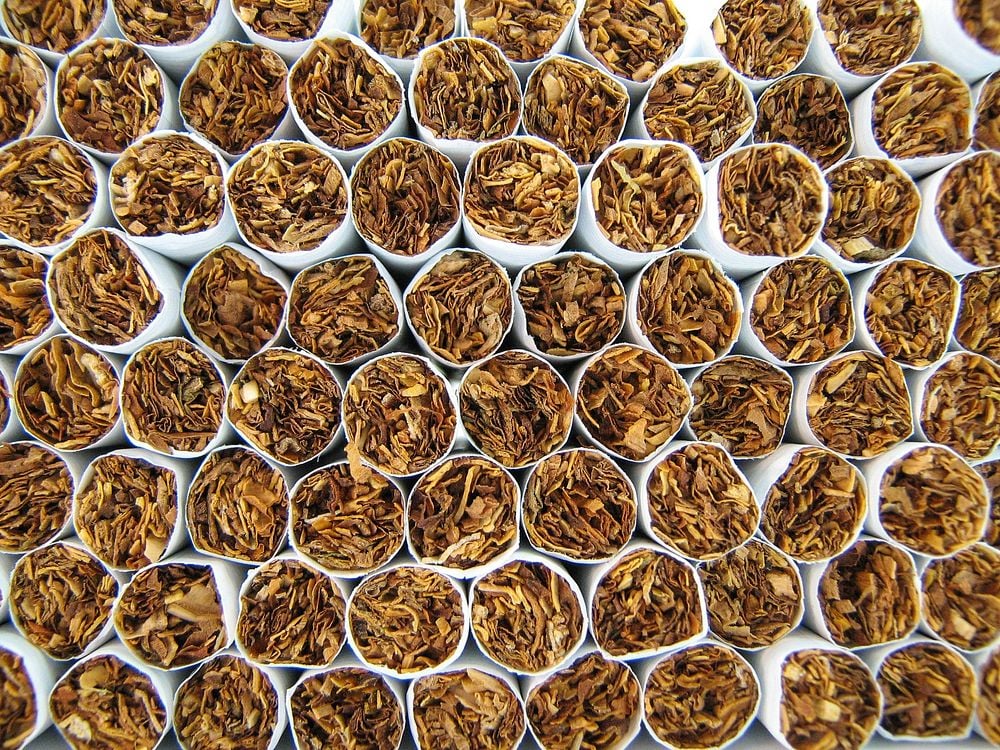
Then, tobacco leaves undergo a meticulous sorting process, an essential step to ensure consistency and quality in the final cigar. The sorting is primarily based on size, texture, and overall quality of the leaves. This careful selection is crucial as different parts of the cigar—wrapper, binder, and filler—require different types of leaves. The wrapper leaves are chosen for their aesthetic appeal and smoothness, while the binder and filler leaves are selected for flavor and burning properties. The leaves are also graded according to their strength, aroma, and potential for aging.
The aging process is where time becomes a key ingredient. Post-fermentation, the leaves are stored under controlled conditions, allowing them to age gracefully. Aging further mellows the leaves, enhancing their flavor and aroma. It’s a process akin to aging fine wine or whisky, where patience is rewarded with depth and complexity. The length of aging varies—ranging from a few months to several years—and is dependent on the type of tobacco and the desired characteristics of the cigar.
During aging, the natural oils in the leaves continue to evolve, smoothing out any residual harshness and allowing the flavors to blend harmoniously. The result is a tobacco that offers a richer, more rounded, and sophisticated smoking experience. Aging is not merely a waiting period; it's an art that requires skill and understanding of how time affects the tobacco. It’s a testament to the cigar maker's dedication to crafting a product that delivers not just a smoke, but an experience.
Mastering the Roll: The Craft of Cigar Making
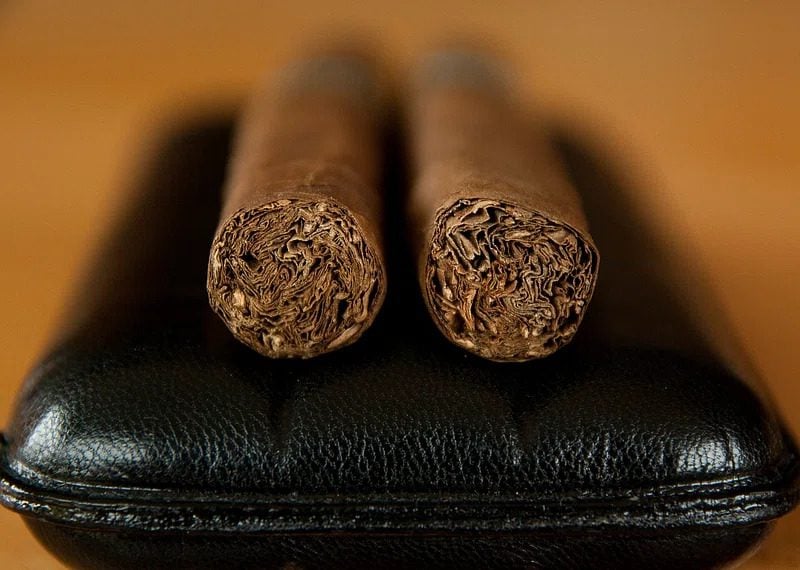
Rolling a cigar is an art form, where skill, precision, and years of experience come into play. This stage of cigar making is where the carefully prepared tobacco leaves are transformed into the final product, a process steeped in tradition and craftsmanship. The mastery of rolling a cigar is often passed down through generations, with each roller, or ‘torcedor,' bringing their personal touch to the craft.
A premium cigar comprises three main components: the wrapper, binder, and filler. The wrapper is the outermost leaf, visible to the smoker. It's selected for its quality, texture, and color, contributing significantly to the cigar's overall appearance and flavor. The binder leaf, usually thicker and more resilient, holds the filler in place and helps maintain the cigar's shape. The filler, a blend of different tobacco leaves, is at the heart of the cigar, determining the core of its flavor profile and smoking characteristics.
The rolling process begins with the filler, which is hand-bunched to create an even burn and a smooth draw. The binder is then wrapped around this bunch, followed by the wrapper, which is applied with precision to ensure a seamless finish. The technique varies from simple parejo (straight) cigars to more complex shapes like torpedos or perfectos. Some rollers also specialize in intricate designs, incorporating multiple wrappers for aesthetic and flavor variation.
Quality Control: Ensuring Excellence
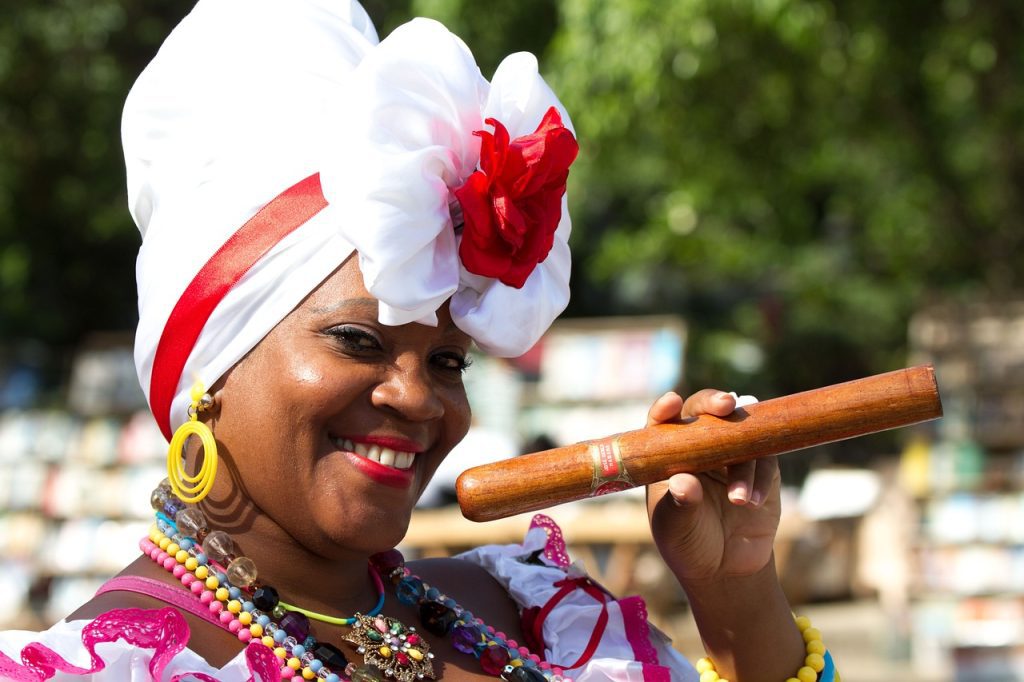
Quality control is the final, critical gatekeeper in the journey of a premium cigar, ensuring that only the finest products reach the hands of enthusiasts. This stage is marked by rigorous and meticulous measures, designed to uphold the highest standards of excellence. Every cigar that emerges from production is subject to a thorough inspection, where both human expertise and technology play pivotal roles.
The inspection process covers several aspects, starting with aesthetics. Examiners scrutinize the cigar's appearance, checking for flaws in the wrapper, uniformity in color, and overall construction quality. A well-constructed cigar should have a smooth, tight wrapper with no tears or prominent veins.
The draw of the cigar, or the ease with which air moves through it, is another critical factor. A good draw ensures a consistent and enjoyable smoking experience. Testers may use specialized devices to measure the draw resistance, ensuring it falls within the desired range.
Consistency is also a key component of quality control. Cigars from the same batch are expected to offer a uniform experience in terms of flavor, burn, and draw. This consistency is vital for maintaining brand reputation and customer satisfaction.
Through these stringent quality control measures, cigar manufacturers strive to ensure that each cigar is not only a product of intricate processes but also a consistent symbol of luxury and craftsmanship. This unwavering commitment to quality is what elevates a premium cigar from a mere smoking item to an experience to be savored.
As you savor your next cigar, reflect on this intricate journey and the artistry it encapsulates, enhancing your appreciation for every nuanced flavor and aroma.




